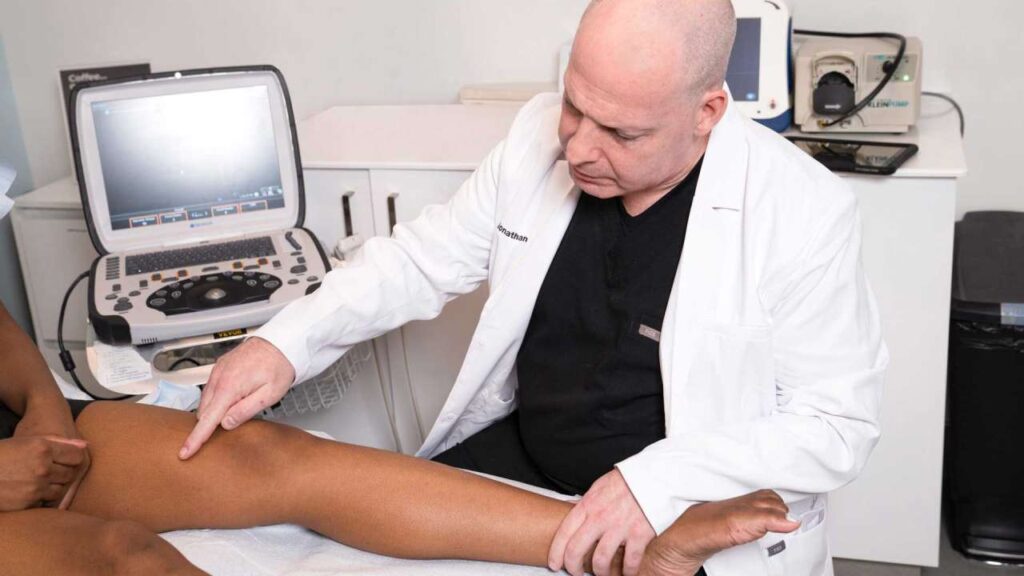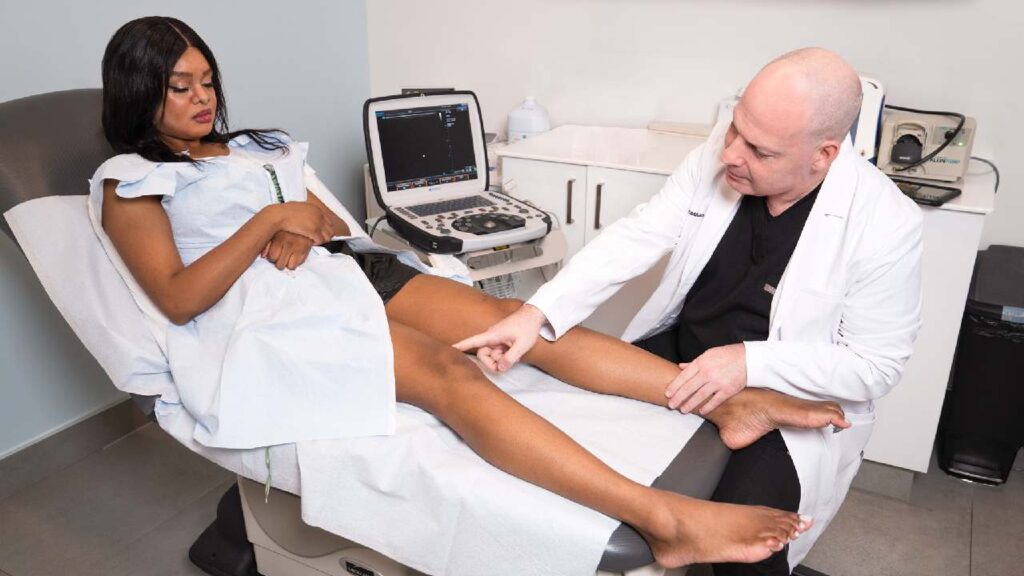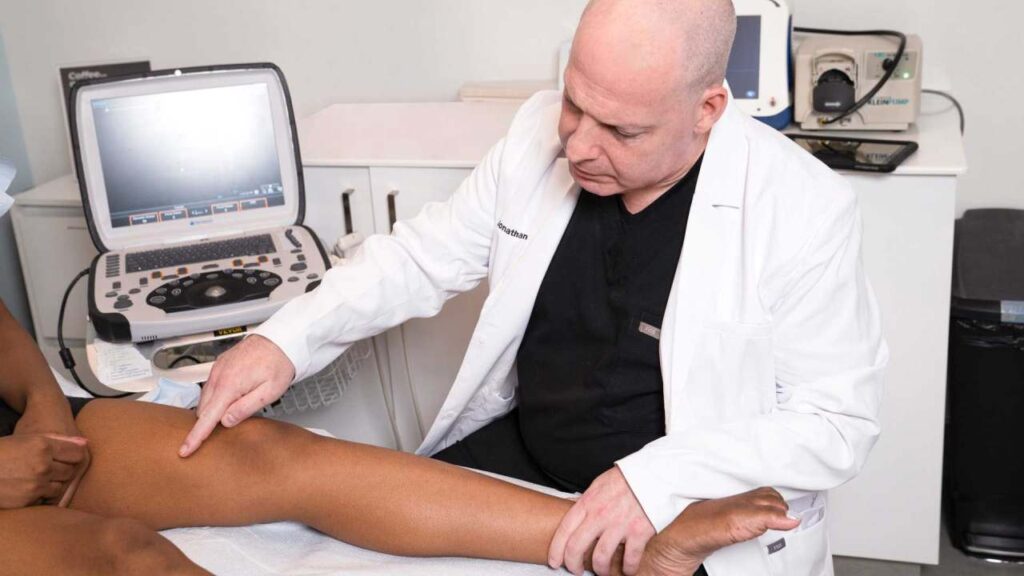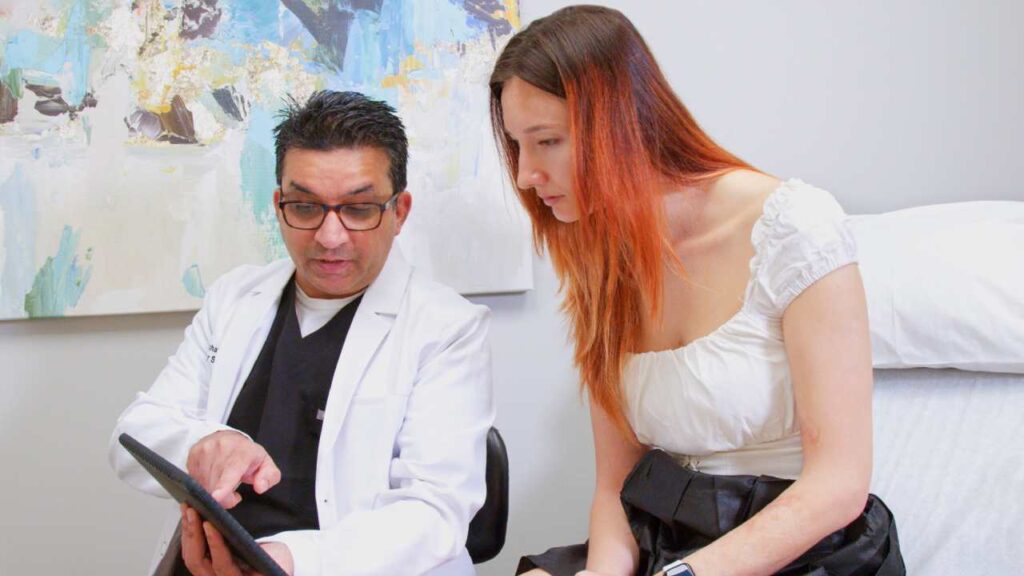Physical Signs of Varicose Veins
Varicose veins are enlarged blood vessels that appear dark purple, green, blue, or red. They have a knotted and twisted appearance, as opposed to healthy veins, which run in a relatively straight line. They are most commonly found in the legs, and can range in severity from asymptomatic to causing a burning sensation. If you have any of these symptoms, you may have a vein disease and should seek vein treatment at a reputable vein clinic.
Underlying Cause of Varicose Veins
Varicose veins can be warning signs of a more serious problem, the most common of which is a vein disease known as chronic venous insufficiency. Healthy veins have one-way valves that direct blood towards the heart while preventing it from returning to the limbs; however, if these valves in the veins of the legs become leaky, the blood succumbs to gravity and travels backwards, pooling in veins near the feet, resulting in chronic venous insufficiency. The venous system can no longer do its job of returning blood to the heart, and as a result of fluid build-up, pressure on the vein walls increases over time, resulting in the bulging varicose veins you may be experiencing.
Chronic Venous Insufficiency (CVI) is a relatively common condition that is associated with leg fatigue, edema, or leg muscle cramping due to insufficient circulation to whisk away excess lactic acid produced from normal activity.
Associated Complications
Some of the most common skin conditions caused by varicose veins are eczema (stasis dermatitis), lipodermatosclerosis, and leg ulcers. Stasis Dermatitis (eczema) is caused by inflammation and/or an accumulation of hemosiderin, a dark red pigment released by broken blood cells that leak out of veins, which causes the weakened skin around damaged veins to become red and scaly. Lipodermatosclerosis is caused by scarring of subcutaneous tissue as a result of vein injury and loss of blood supply in the area, which can lead to long-term injury, hyperpigmentation, and skin stiffening. The pressure in the vessels caused by blood pooling in the lower extremities can cause skin breakage or ulcers, which are open wounds that do not heal well due to poor perfusion.
Bleeding and deep vein thrombosis are two examples of hematological complications. When veins are significantly bulging, even the smallest bump or scratch can cause profuse bleeding.
because the skin above them has thinned out The most dangerous consequence of untreated varicose veins is Deep vein thrombosis (DVT), which begins as superficial vein thrombosis that can then travel to other places as they dislodge and expand. When the clot scrapes through the veins, it causes damage to the vein walls. The clot may even travel to the lungs and cause potentially fatal pulmonary embolism
Self-Diagnosis of CVI
When determining whether you are experiencing these signs and symptoms, consider not only the last few weeks, but also how your legs looked and felt five or ten years ago. If your legs are noticeably tired or achy at the end of the day, and if you have varicose and spider veins, get screened for underlying venous insufficiency at a vein clinic. Many people believe that all of these signs and symptoms are just part of aging, but Chronic Venous Insufficiency can be treated, so it is critical to schedule an appointment with a vein center with venous medicine specialists to ensure that the damage to the veins is repaired.
Physician Diagnosis of CVI
CVI is diagnosed using Duplex Ultrasound, which goes beyond standard ultrasound by incorporating Doppler, which shows the vein doctor the speed and direction of blood flow in a blood vessel. This enables them to determine whether the blood is having difficulty moving through the large and small saphenous veins, if it is traveling in the wrong direction, or if it is not perfusing certain veins or regions of the body at all. All of these symptoms are indicative of venous insufficiency.
After a vein doctor has evaluated and diagnosed you, he or she can recommend the best varicose vein and spider vein treatment for your specific case. Vein specialists will almost always recommend a minimally invasive procedure to repair the “leaky pipe” and close unhealthy veins to ensure that blood flows in the proper direction. Although surgical procedures were once the only way to treat varicose veins, medical advancements have enabled us to treat varicose and spider veins with minimally invasive procedures.
Varicose veins and venous insufficiency can be treated at a vein center with non-surgical, minimally invasive treatments such as VenaSeal, Varithena, or radiofrequency ablation. The benefit of minimally invasive methods is that they all cause minimal discomfort and take less than a half-hour. There is no need for anesthesia or recovery time, so you can resume your normal activities following your outpatient appointment at the vein clinic.
VenaSeal is a vein adhesive that seals the diseased vein almost instantly after application, rerouting the blood automatically through the healthy veins in your legs. Varithena is a sclerotherapy foam that is pre-made and injected into the vein to reduce the appearance and symptoms of varicose veins. Radiofrequency ablation begins with the administration of a local anesthetic, which requires little to no recovery time, and is followed by the ultrasound-guided insertion of a catheter into the unhealthy vein. The catheter is activated after the numbing solution has been delivered to the length of the vein, and thermal energy is delivered to the vein walls to close them down.
Where can I seek vein treatment in New York?
As discussed earlier, varicose veins are part of an abnormal but treatable condition known as Chronic Venous Insufficiency. It is essential to set up an appointment with a vein specialist at a vein center near me to minimize damage to the veins and prevent further problems down the road. If you are looking for vein treatment in New York, you can contact us at the Vein Treatment Clinic location in New York City, conveniently located in the heart of New York in Midtown, near notable landmarks such as Empire State Building and Chrysler Building. Our vein treatment center is easily accessible, as it is in close vicinity to both Grand Central Station and Penn Station.
You can schedule your consultation with any of our three incredible vein doctors at this vein center near me and be assured of the highest-quality care. Dr. Juan Montoya is a Yale-trained double board-certified specialist in venous medicine and cardiothoracic surgery, and is bilingual in English and Spanish. Dr. Sareh Rajaee is also a Yale-trained vascular surgeon with extensive experience in vein and arterial disease. They both prioritize patient care and strive to provide treatment with compassion and professionalism. Click here for directions and check out the Vein Treatment Clinic location in New York City for vein treatment today!






